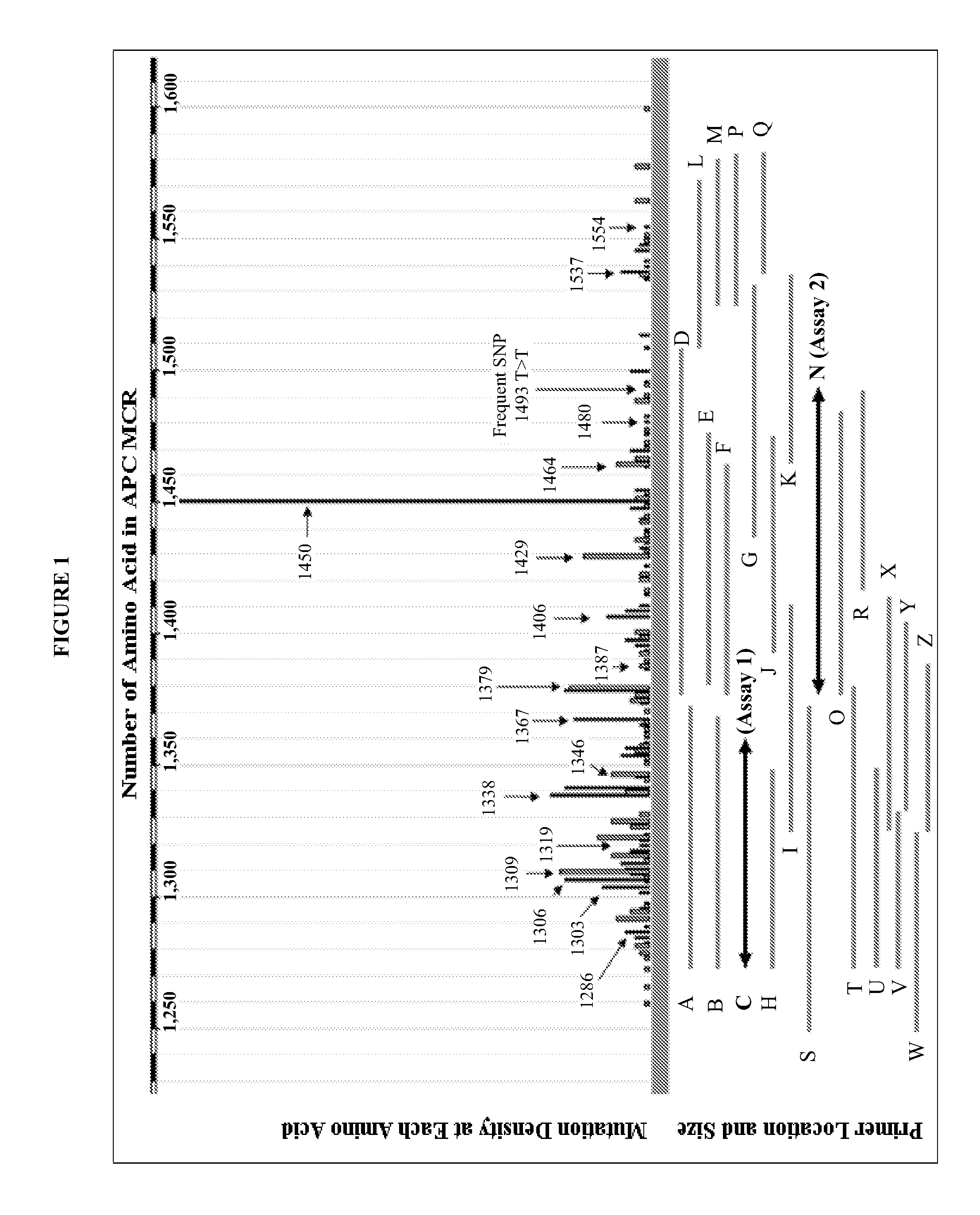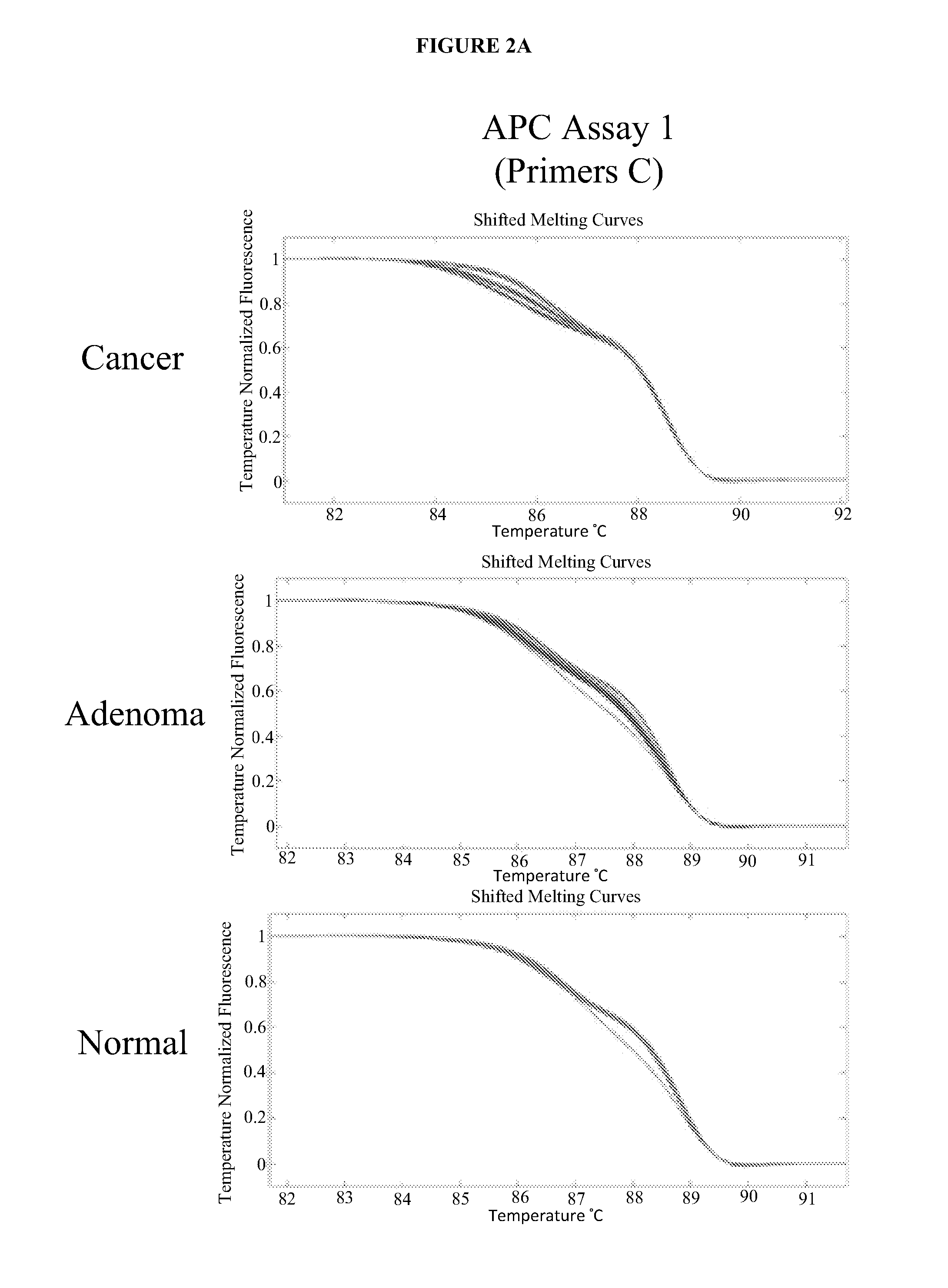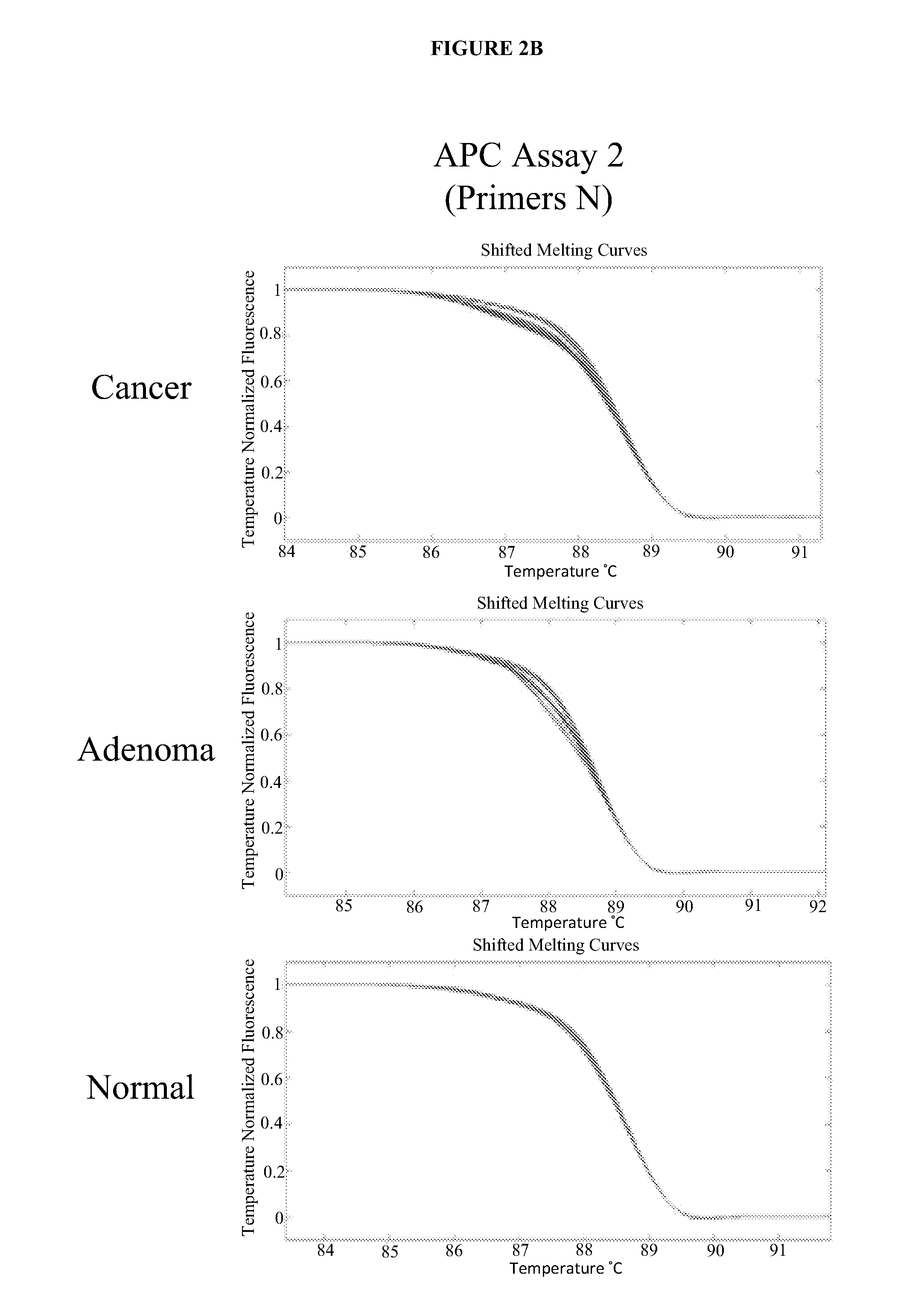Methods and materials for detecting colorectal cancer and adenoma
a colorectal cancer and adenoma technology, applied in the field of colorectal neoplasm specific marker detection, to achieve the effects of facilitating diagnosis and clinical intervention, lowering morbidity and mortality, and improving recovery rates
- Summary
- Abstract
- Description
- Claims
- Application Information
AI Technical Summary
Benefits of technology
Problems solved by technology
Method used
Image
Examples
example 1
Quantitative Stool DNA Testing for Detection of Both Colorectal Cancer and Advanced Adenoma
[0104]Subjects
[0105]Two hundred and one subjects, including 74 patients with CRC, 27 with an adenoma ≧1 cm, and 100 with normal colonoscopy, were all recruited at a major research hospital. The demographic and clinical characteristics of these subjects are shown in Table 1.
TABLE 1Clinical characteristics of subjects.CancerAdenomaNormalNumber7427100Median Age (Range)61 yrs (40-87)67 yrs (50-82)59 yrs (28-81)Sex (M / F)52 / 2215 / 1237 / 63Location29 / 4517 / 10(Proximal / Distal)Dukes Stage13 / 16 / 27 / 18(A / B / C / D)Grade (1 / 2 / 3 / 4) or0 / 4 / 55 / 520 / 5Dysplasia (Low / High)
[0106]Stool Collection and DNA Extraction
[0107]Stools were collected more than 2 weeks following any colorectal diagnostic procedure or cathartic preparation and prior to either endoscopic or surgical neoplasm resection. Patients collected whole stools in a preservative buffer (0.5 mol / L Tris, 10 mmol / L NaCl, 150 mmol / L EDTA, pH 9.0), and shipped to the ...
example 2
Detection of Colorectal Cancer and Advanced Adenomas by Stool Assay of Individual Markers and Selected Marker Combinations
[0135]To determine the informativeness of various single markers and combinations of markers in the detection of colorectal cancers or advanced adenomas using stool sample DNA extracts from patients, the sensitivities of several single markers were compared (DNA concentration as determined by Alu PCR; mutation frequency in KRAS as determined by digital melt curve (DMC), mutation frequency in APC as determined by DMC, vimentin methylation as determined by quantitative methlation-specific PCR (qMSP), hemoglobin concentration as determined by HemoQuant Assay) and the sensitivities several combinations of markers were compared (Alu+hemoglobin; Alu+KRAS+BMP3 methylation; Alu+KRAS+BMP3 methylation+APC; Alu+KRAS+BMP3 methylation+vimentin). Assays were conducted as described in Example 1 (Alu PCR, KRAS, APC, BMP3) or as described previously (vimentin) (Zou et al. (2007) ...
example 3
Failure of BRAF and BAT26 to Add Sensitivity in a Multimarker Assay for Detection of Colorectal Cancer and Advanced Adenoma
[0136]During development of some embodiments of the present invention, it was found that some single markers did not promote increased sensitivity of assay methods when they were included in multimarker panels. In particular, mutation marker BRAF and microsatellite instability marker BAT26 were tested to determine whether inclusion of these markers in a multimarker assay for detection of colorectal cancer or advanced adenoma would increase the sensitivity of the assay. Inclusion of these markers did not result in a detectable improvement in sensitivity.
PUM
| Property | Measurement | Unit |
|---|---|---|
| Fraction | aaaaa | aaaaa |
| Fraction | aaaaa | aaaaa |
| Fraction | aaaaa | aaaaa |
Abstract
Description
Claims
Application Information
 Login to View More
Login to View More - R&D
- Intellectual Property
- Life Sciences
- Materials
- Tech Scout
- Unparalleled Data Quality
- Higher Quality Content
- 60% Fewer Hallucinations
Browse by: Latest US Patents, China's latest patents, Technical Efficacy Thesaurus, Application Domain, Technology Topic, Popular Technical Reports.
© 2025 PatSnap. All rights reserved.Legal|Privacy policy|Modern Slavery Act Transparency Statement|Sitemap|About US| Contact US: help@patsnap.com



